Scientist of the Day - Armand David
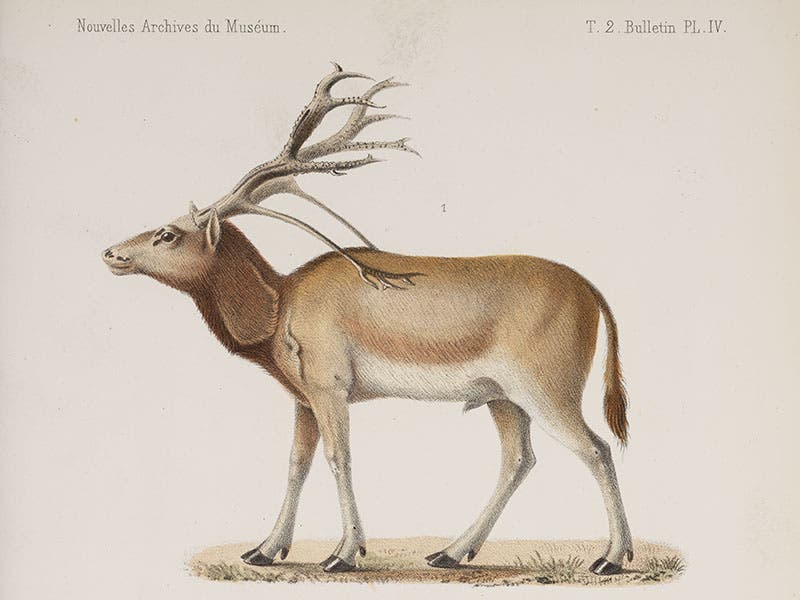
Linda Hall Library
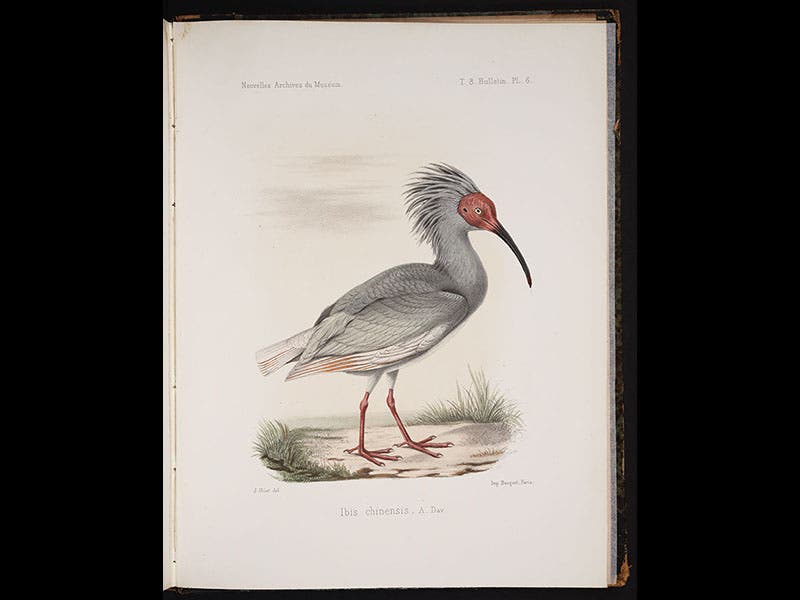
Linda Hall Library
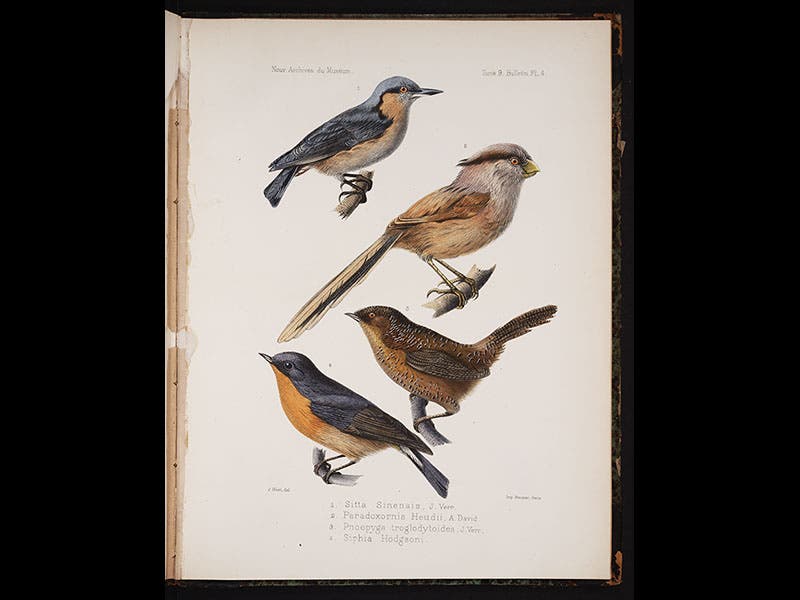
Linda Hall Library
Father Armand David, a French missionary and zoologist, was born Sep. 27, 1826 (second image). David was sent to Beijing in 1862 by his Lazarist order, and he immediately began collecting plants and animals in China to send back to Paris. He also sent back travel narratives that were published serially in the Nouvelles archives du museum d'histoire naturelle. His most famous discovery (for the West) was the Giant Panda, a dead specimen of which David encountered in 1869. He shipped the skin to Paris, where it was named and visually reconstructed for the first time in Europe. The lithograph was published in the Recherches pour servir a l’histoire naturelle: Mammiferes (1868-74), by Henri and Alphonse Milne-Edwards. We do not have this work in the library, so we show the illustration from the copy in the Smithsonian Libraries (first image).
Earlier, in 1865, Father David had seen an unfamiliar deer in a herd maintained for the Emperor–a deer that had almost disappeared from the wild. The locals called it sibuxiang, “none of the four”, because it seemed to consist of the parts of a deer, a cow, a horse, and a donkey. We now call it Pére David’s deer. After its description and picture was published in the Nouvelles archives for 1866 (third image), a few live specimens were sent to Europe, and several breeding herds were set up, especially one at Woburn Abbey in Bedfordshire, England, the home of the Duke of Bedford. This was fortunate, because the Chinese Imperial herd was eaten to extinction during the famines of the 1890s and the Boxer Rebellion 0f 1899-1901. In the 1980s, several dozen deer were returned to China from Woburn Abbey and released in the Imperial Park where Father David first saw them. Several other transplantations have occurred since, and today there are a few thousand Pére David deer in China, in various nature preserves.
Father David also discovered a tree in China that has spectacular white blossoms that flutter in the wind, like doves or handkerchiefs (fourth image). The “handkerchief tree” or “dove tree”, as it is popularly known, carries the scientific name of Davidia involucrata and is catching on in the West. We tried to grow one on the Library grounds a few years back, in the central island in the front parking lot, but that summer was unusually hot, and our Davidia sadly succumbed.
The other images above show birds that were sent back by David and first described in the pages of the Nouvelles archives, such as the crested ibis (fifth image) and the reed parrotbill (sixth image, 2nd bird from the top). The birds were drawn, as were the panda and deer, by Josèphe Huët.
Dr. William B. Ashworth, Jr., Consultant for the History of Science, Linda Hall Library and Associate Professor, Department of History, University of Missouri-Kansas City. Comments or corrections are welcome; please direct to ashworthw@umkc.edu.



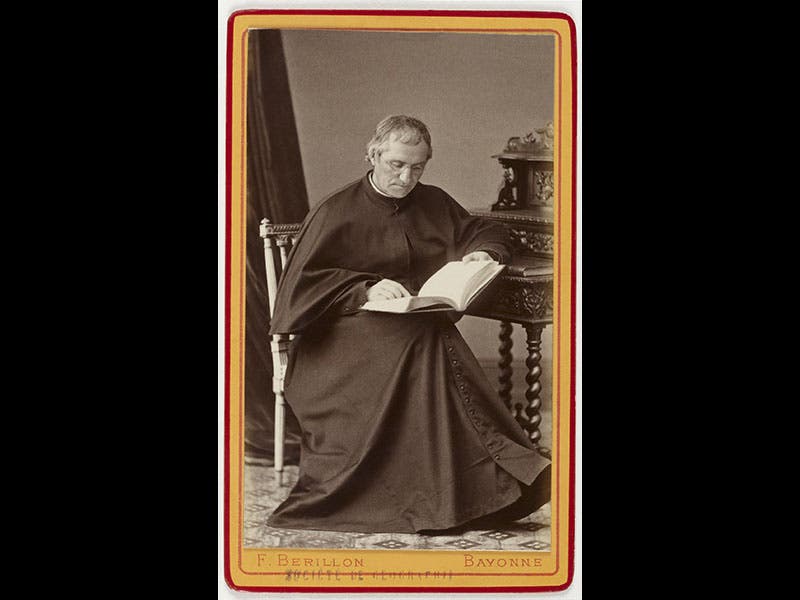
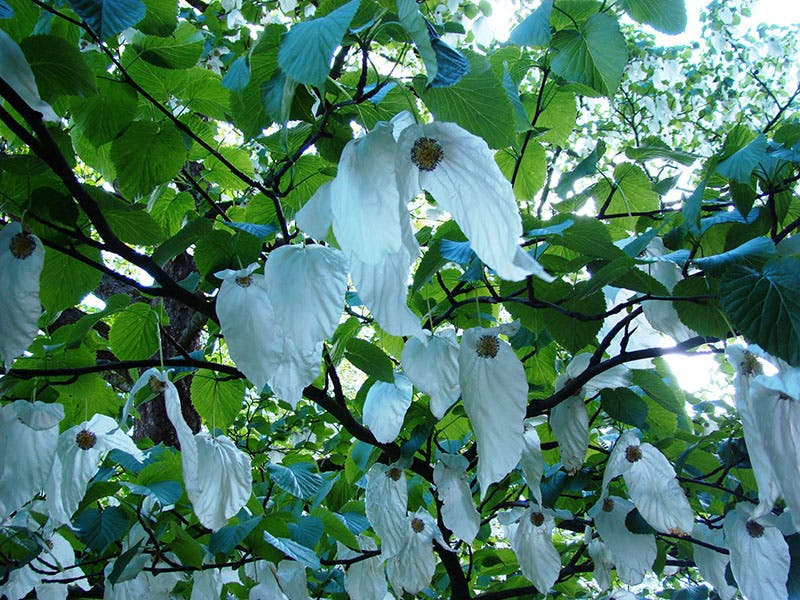



![Columbine, hand-colored woodcut, [Gart der Gesundheit], printed by Peter Schoeffer, Mainz, chap. 162, 1485 (Linda Hall Library)](https://assets-us-01.kc-usercontent.com:443/9dd25524-761a-000d-d79f-86a5086d4774/3829b99e-a030-4a36-8bdd-27295454c30c/gart1.jpg?w=210&h=210&auto=format&fit=crop)
